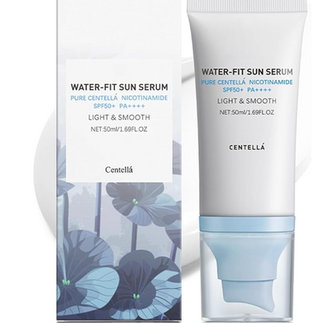Buyer Beware: Fake Korean Skincare
- nüseoul

- Sep 24
- 3 min read
Updated: Sep 25
The Rise of Fake Korean Products
In recent years, Korean skincare has taken the world by storm, and for good reason. With innovative formulations, high efficacy, and sleek branding, K-beauty has become a global industry worth over $13 billion as of 2023, and it’s projected to reach $21 billion by 2027 (Statista, 2023).
But with popularity comes a darker side: counterfeit products. These fakes don’t just underdeliver, they can damage your skin, compromise your health, and exploit consumers who trust the K-beauty label.
A Personal Wake-Up Call: A friend's Fake Sunscreen
This blog was inspired by something close to home. I found out that a friend was using a sunscreen she bought from Amazon, SKIN1004’s Madagascar Centella Water-Fit Sun Serum. At first glance, it looked legitimate. But something felt off: the cap design, the labelling, even the texture and scent of the formula.
When we compared it with an authentic one, the differences were clear. It was a fake. She had no idea.
And honestly, how could she have known? Below are all examples I found of fake sunscreens on Amazon.
Why Fake Korean Skincare is on the Rise
There are a few key reasons why counterfeit K-beauty is exploding:
Massive Global Demand: As K-beauty becomes more popular overseas, it becomes harder for consumers to find verified stockists, especially outside Korea. This opens the door for shady third-party sellers.
Lack of Regulation on Marketplaces: Platforms like Amazon, eBay, and AliExpress allow third-party sellers with minimal oversight. A 2020 U.S. Government Accountability Office (GAO) investigation found that counterfeit cosmetics were rampant on major e-commerce sites, including items that tested positive for dangerous ingredients like lead, arsenic, and bacteria.
Packaging Dupes Are Alarmingly Good: Fake manufacturers are getting more sophisticated. Copycat packaging often mimics original fonts, logos, and even expiry stamps, making it difficult to tell them apart at first glance.
Cheaper Prices Are Too Tempting: Many consumers don’t realise that buying a £9 sunscreen instead of a £19 one might mean they’re skipping on product safety, SPF efficacy, or proper preservation.
What’s at Stake? It’s Not Just Ineffective Skincare
Fake skincare products aren’t just weak versions of the real deal, they can be actively harmful.
A study by the OECD found that fake cosmetics can contain urine, paint thinner, mercury, and even rat droppings.
Users have reported allergic reactions, burns, rashes, and long-term skin damage from counterfeit skincare.
And let’s not forget: fake sunscreens may not actually protect you from UV damage, defeating the entire purpose and increasing your risk of skin cancer.
How to Spot a Fake: 7 Crucial Tips
To protect your skin, and your money, here are some practical ways to avoid counterfeit Korean skincare:
1. Buy Only From Official or Verified Stockists
Stick to:
Official brand websites like Stylevana, YesStyle and Olive Young
Reputable UK stockists like Boots, Skin Cupid, Beauty & Seoul, or PureSeoul
2. Compare Packaging Closely
Look at:
Fonts: Are they consistent and sharp?
Caps and closures: Are they slightly different shapes or plastic quality?
Batch codes and expiration dates: Real ones are cleanly stamped and usually searchable on the brand’s website.
Below is the fake product bought from Amazon on the left, and the real one on the right. Would you be able to tell?
3. Check the Texture and Smell
A counterfeit product may have:
A runnier or stickier consistency
A strong, chemical scent instead of the brand’s usual fragrance

4. Scan the QR Code or Batch Number
Some brands (like COSRX, SOME BY MI, SKIN1004) have authentication codes on the packaging.
5. If It’s Too Cheap to Be True…
It probably is. A deal that undercuts the retail price by more than 30–40% should raise red flags.
6. Check Reviews, Carefully
Look at the product page’s reviews for keywords like “fake,” “different texture,” or “reaction.” Also check review images uploaded by customers.
7. When in Doubt, Don’t Use It
If you're even slightly unsure, don’t risk your skin. Contact the brand directly with photos or send it to a trusted reseller for verification.
What Brands Are Most Commonly Counterfeited?
Some of the most frequently faked K-beauty brands include:
SKIN1004
COSRX
Laneige
Innisfree
Missha
Dr. Jart+
These brands are victims of their own success, but that means we, as consumers, have to be more vigilant.
Final Thoughts: Protect Your Skin
The rise of fake Korean skincare is not just a nuisance, it’s a health risk and a betrayal of consumer trust. If you care about your skin (and we know you do), learning how to spot fakes is non-negotiable.
Let’s help protect each other. Share this article with friends and family, especially those who might be unknowingly buying from unverified sources.
She now checks everything before buying, and so should we.













Comments